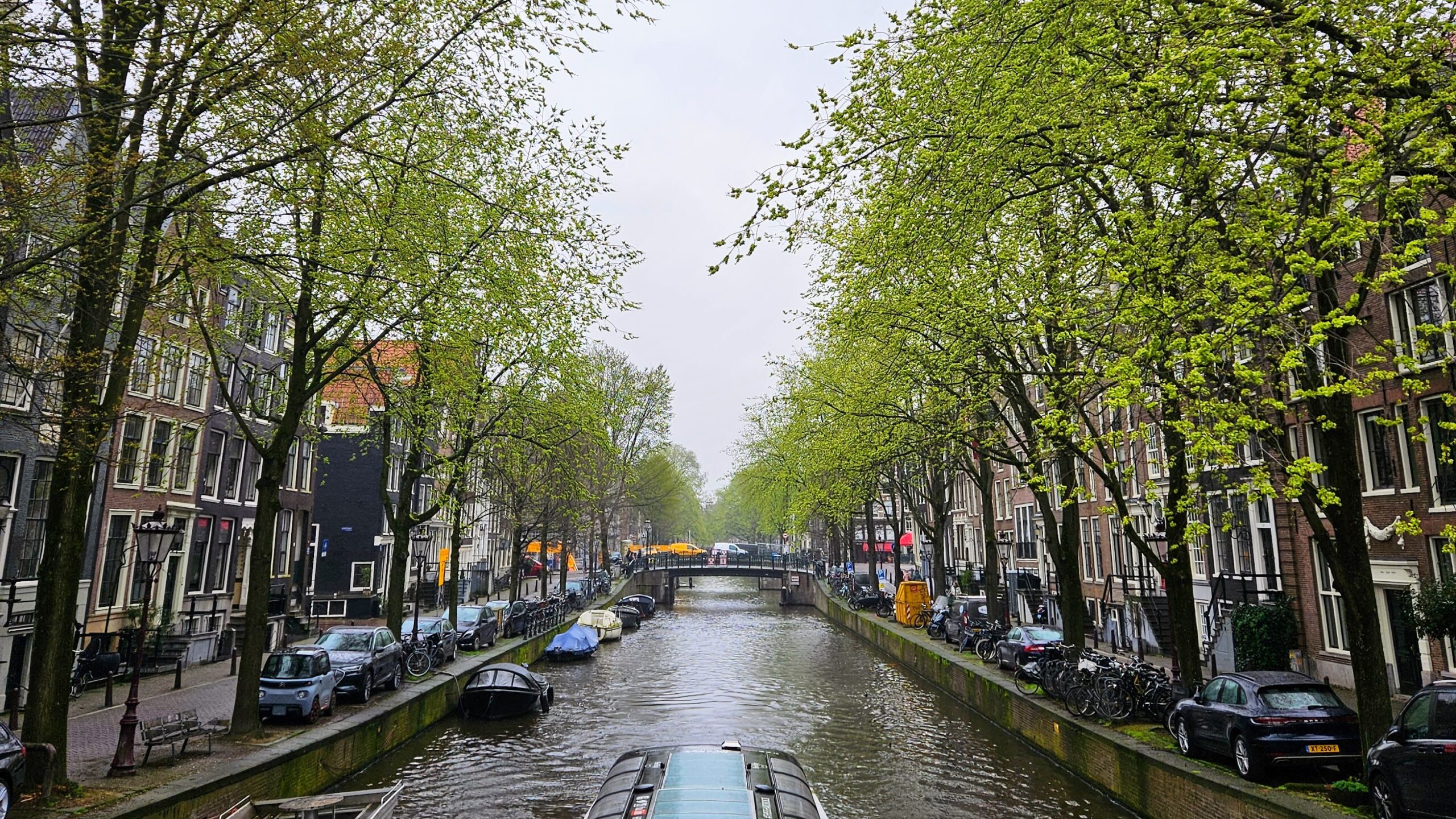A trip for 3 nights to Amsterdam is suggested by most people just to see this city. Often frequented by European tourists, Amsterdam has a reputation for being a “party city” with multiple coffeeshops (weed cafes) open to all and a famed red light district. Unfortunately, this attracts the wrong crowd of tourists to the city, with it being so bad that Amsterdam is now looking at outlawing drug use in the city and has campaigns to deter British tourists specifically.
Despite this reputation, Amsterdam is a beautiful city. Its unique rows of tall house facades, echoes from the Dutch Golden Age, are the iconic image of the city that make wandering around and getting lost such a pleasure.
For a solo traveller, Amsterdam is one of the best European cities I have been to. There are endless museums and activities to do; public transportation is possibly the best in Europe; plenty of other solo travellers to meet; good nightlife. I would caution you on the prices, as Amsterdam is one of the most expensive cities in Europe also.
This is exactly what I started doing on my first day there. Arriving at 5pm, most of the museums and shops were starting to close already. It was still light and a warm day which are the perfect conditions for a stroll around Amsterdam. I mostly explored around my hostel, St Christophers, which is directly next to the Red Light District. Walking around the Red Light District you are directly bombarded sex clubs and venues, coffeeshops with a strong stench of weed, and countless bars and takeaway stores.
It’s certainly interesting to walk around for a short while, but I don’t see the value in returning apart from to go on a night-out, which it is good for. It also attracts a certain crowd that obviously only go to Amsterdam to smoke. On the first full day I was there, I decided to go to the Rijksmuseum – The Netherlands’ famous art gallery – for their Frans Hals exhibition, and then their permanent collection. The Rijksmuseum building itself is a grand monument of the 1800s. Unpopular on its initial launch, it has come round to hailed as one of the most iconic buildings in Amsterdam.
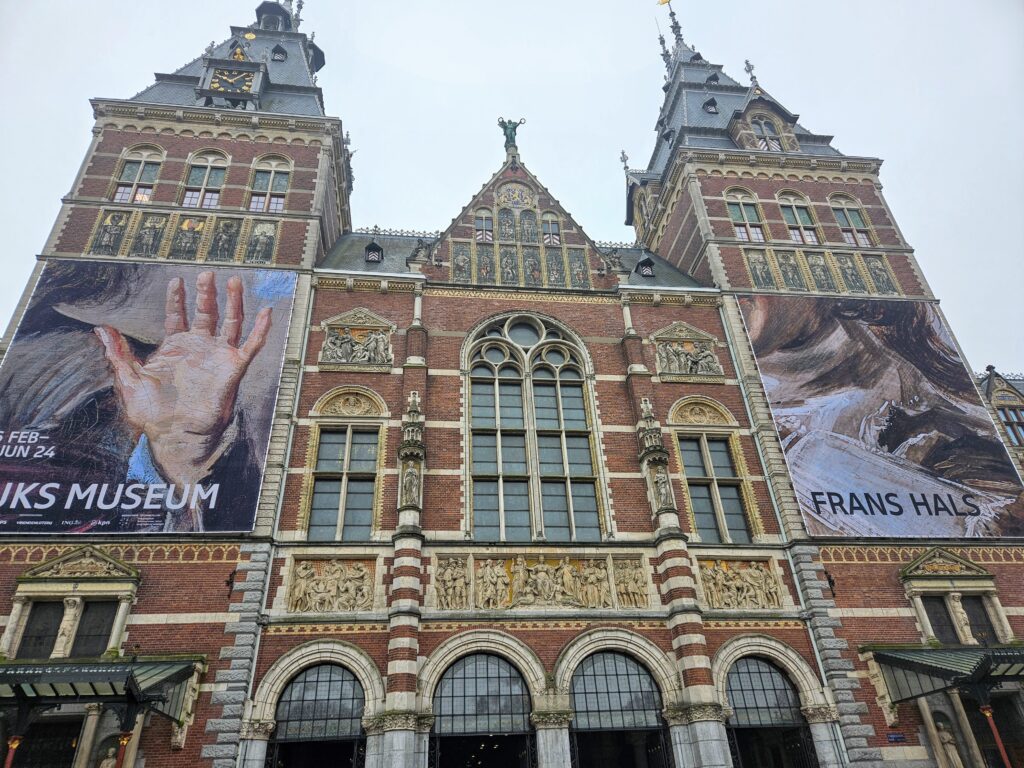
Beautiful mediaeval-style stained glass windows that tower over you as you enter the floor premiering the fine arts of the Dutch Golden Age. Elusive Vermeer paintings and iconic Rembrandt portraits, with The Nightwatch painting that almost demands you to stand back and look up in awe.
There is also a surprising escape in the Rijksmuseum located near The Nightwatch, that is their library. A tranquil peace almost acting as a temporal pause in your visit helps break it up. I was also pleasantly surprised at Rijksmuseum’s Asia collection of Chinese, Japanese and Korean monuments. Lovely Chinese relics of tea pots and stamps from bureaucrats. Most likely items acquired from Dutch merchants in its far-reaching empire.
I highly recommend purchasing the audio guide for the Rijksmuseum. It’s only 6,50 euros and provides both an audio caption and text article for much of its collection. It also provides tours around the museum if someone is only interested in the highlights. For someone who isn’t fond of standing around museums for hours, I would opt for using this.
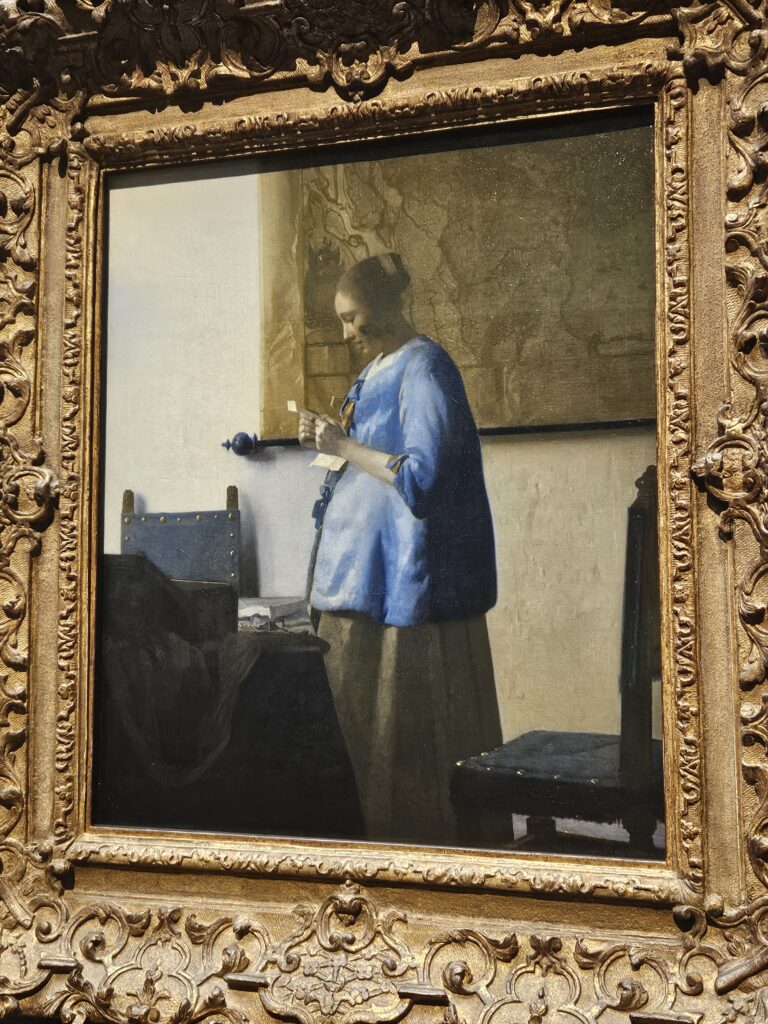
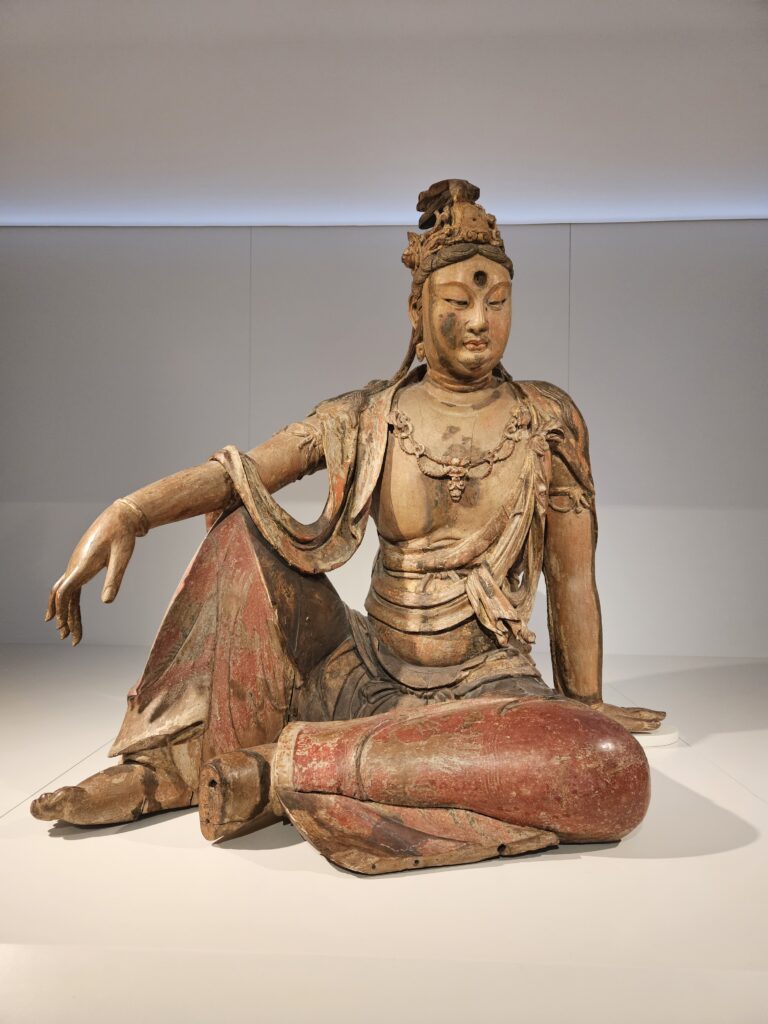
A night cruise is also an experience not to miss. Amsterdam’s canal arches are dotted with gleaming lights that shimmer in its angular rivers. The night cruise I went on personally had its audio guide broken for the first 20 minutes, but I’m sure most of them don’t have this issue.
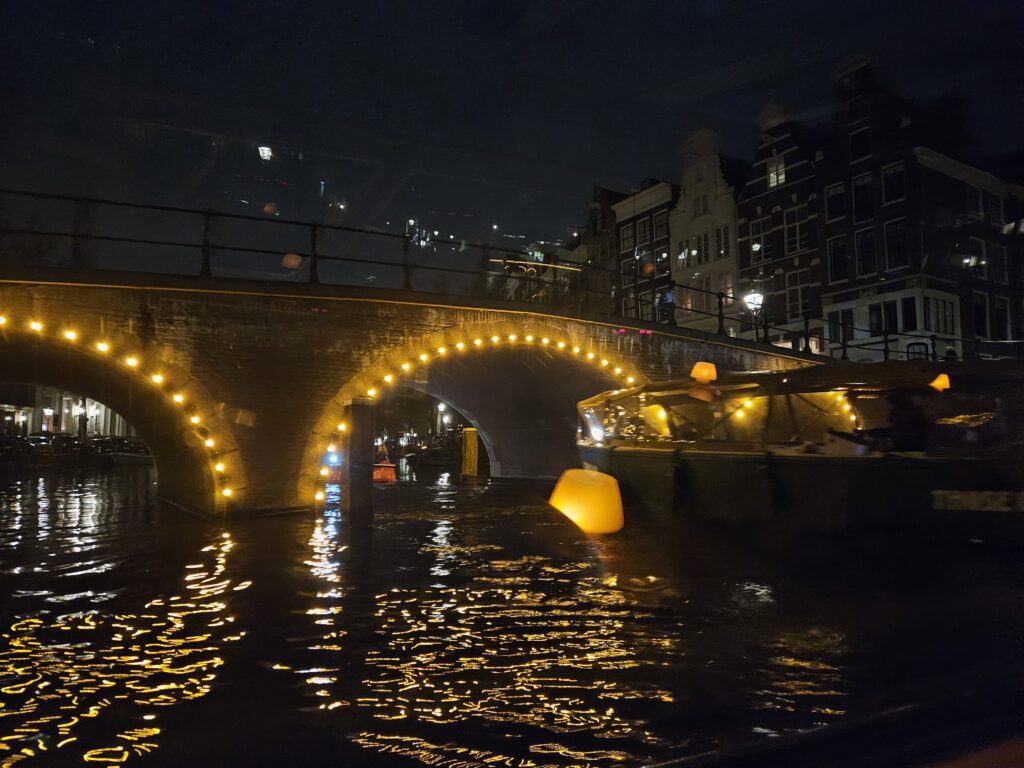
My second morning there I stopped in The Lobby for breakfast. Despite being fairly central in Amsterdam, the area on Friday 10am is oddly quiet which makes navigating the narrow alleyways a charming city stroll. The Lobby itself is a lovely breakfast place with pancakes and typical egg breakfast meals on offer. A well-worth 17 euros spent.
I decided to hop over to Begijnhof. This small neighbourhood is one of unique history where only women who were unmarried and decided to not live a monastic lifestyle were allowed to live as Beguine refugees, dating back to the 14th century. There is a yearly tradition where people place flowers on the courtyard above the burial place of a woman who passed away in the 17th century. Begihnhof serves as a quiet oasis right in the heart of Amsterdam where you can observe Christian facades on the wall and the quiet life of the current residents residing there.
For a piece of quiet while roaming around Amsterdam and an appreciation of historical neighbourhoods, I highly recommend coming here.
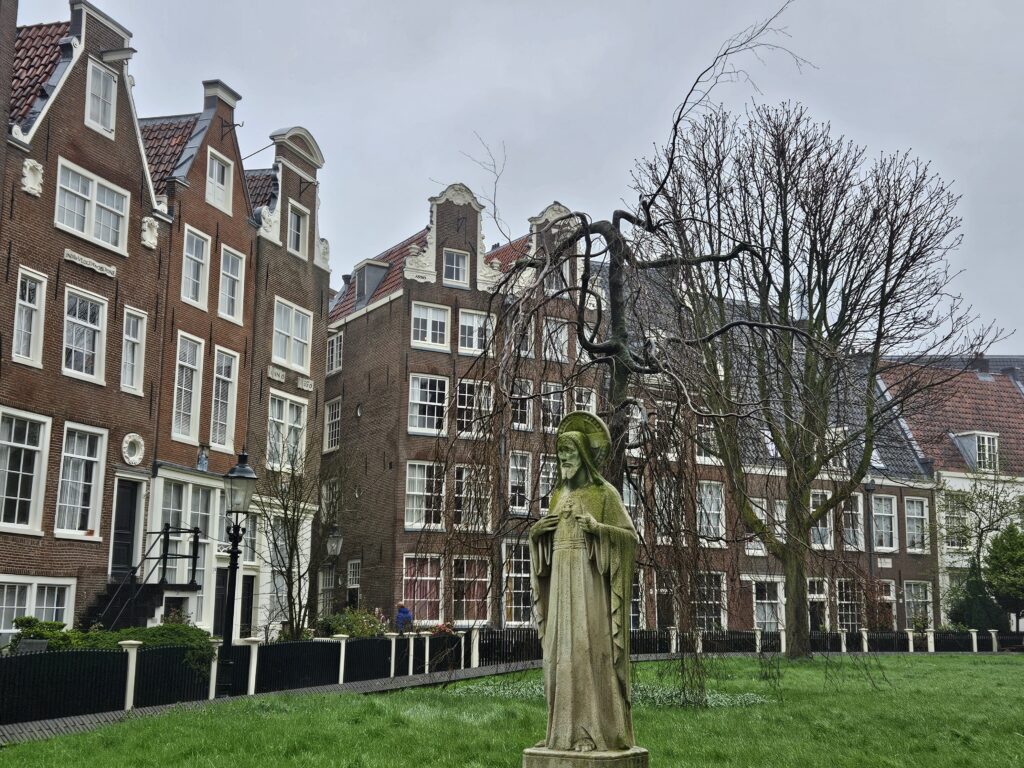
After that was Jordaan and The Nine Streets. Walking around Jordaan surrounds you with the iconic Amsterdam house facades of the Dutch Golden Age. The streets are remarkably clean with gorgeous canals that are bordered with trees transporting you to the epitome of Amsterdam life. Small cafes with unassuming storefronts but sleek interiors and designs that epitomise middle class leisure to the Anglo-centric tastes. Jordaan is well-worth the 3 hours you walk around to glamour at the tall houses wishing you lived in one.
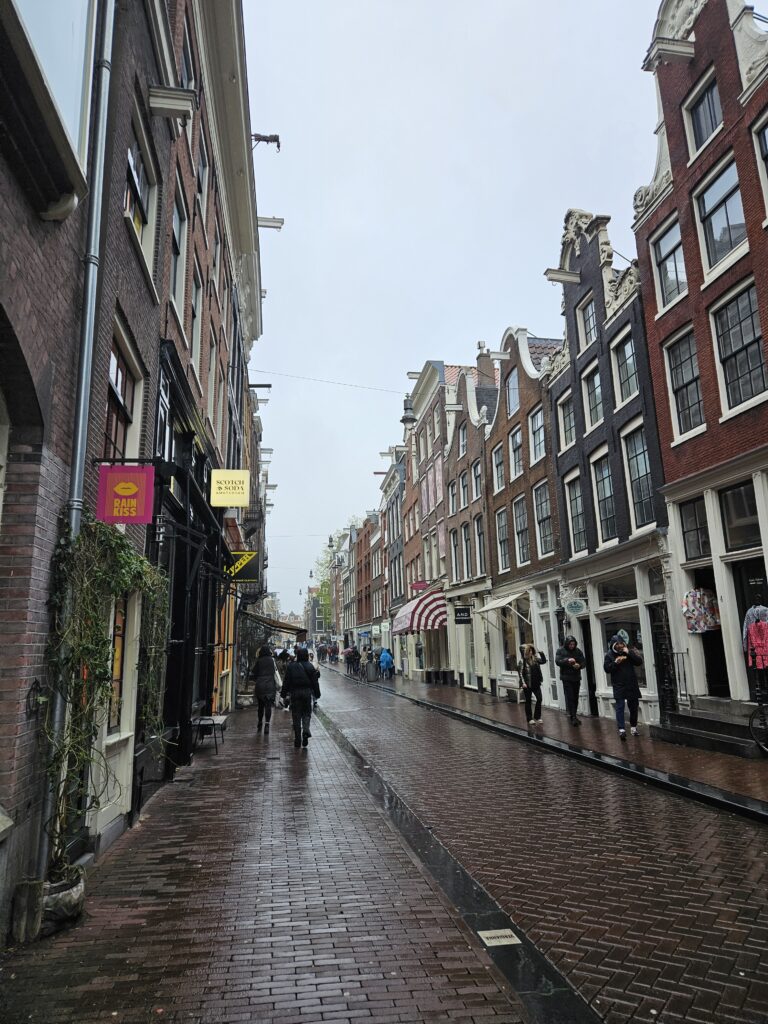
Towards the evening I checked the Hostelworld group chat finding a message asking if anyone is up for a drink. I responded yes with my Instagram handle as that seems to be the common practice.
Meeting an American and a New Zealander for drinks at the Belushi bar, we made our introductions to each other and I hastily drank my double-vodkas to help lubricate my own conversation. I managed to not clumsily stumble through the talk while we waited for the other people to join. Once we were all together, we walked around to find some more bars, sitting in Italian restaurants, and nautical-style pubs.
We got along well with each other. Conversation flowed naturally and everyone generally just seemed to be in joyous and good spirits at meeting other solo travellers in Amsterdam – helps all being roughly the same age too. Later in the evening, we came to De Sluyswacht and met some Dutch ladies around the same age as us that took us to some gay clubs.
Going to the airport the next morning was rough on two hours of sleep, do not recommend it!
